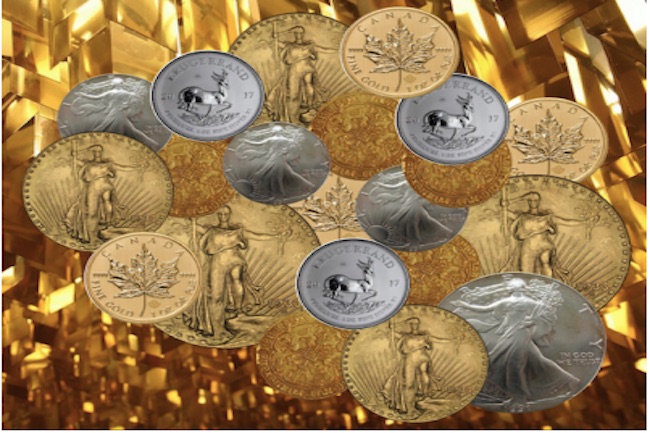Real Money – Inflation – Money Printing – $6 Trillion Budget
GNN Note – Real money, gold and silver, are ways to protect purchasing power and wealth. /END
We talk a lot in these pages about what to do with one’s money, but I question whether most subscribers (forget about the public at large) have an adequate grasp of the basics. Without it, much of what we say may seem capricious or outlandish, crazy ideas readers tolerate only because we’ve been so right about the big trends. But the basics in speculating and investing are like the basics in martial arts: Just remembering them isn’t enough; they need to be second nature. That means reviewing and practicing over and over.
It’s not an accident that we usually make good investment calls; the selections arise from a constant awareness of the basics. So I want to briefly review those fundamentals. Let’s start with gold. We’re very gold-oriented around here.
You undoubtedly have a good position in gold. Many of your friends are aware that you’re a gold bug, and more than a few of them question your wisdom. Are you able to give them a succinct and cogent explanation not just for why gold is cyclically a good speculation, but why it’s money? I’ll wager the answer in many cases is, “No.”
I say that because when I give a speech, I often offer a prize to the audience member who can tell me the five classical reasons gold is the best money. Quickly now; what are they? Can’t recall them? Read on, and this time, burn them into your memory.
Money
If you can’t define a word precisely, clearly, and quickly, that’s proof you don’t understand what you’re talking about as well as you might. Here, we talk a lot about money, so it only makes sense to know the subject completely. So, what is money? The proper definition of money is: Something that functions as 1) a medium of exchange and 2) a store of value.
Government fiat currencies can, and currently do, function as money. But they are far from ideal. What, then, are the characteristics of a good money? Aristotle listed them in the 4th century BCE. A good money must be all of the following:
- Durable: A good money shouldn’t fall apart in your pocket nor evaporate when you aren’t looking. It should be indestructible. This is why we don’t use fruit for money.
- Divisible: A good money needs to be convertible into larger and smaller pieces without losing its value, to fit a transaction of any size. This is why we don’t use things like porcelain for money; half a Ming vase isn’t worth much.
- Consistent: A good money is something that always looks the same, so that it’s easy to recognize, each piece identical to the next. This is why we don’t use things like oil paintings for money; each painting, even by the same artist, of the same size and composed of the same materials, is unique.
- Convenient: A good money packs a lot of value into a small package and is highly portable. This is why we don’t use water for money, as essential as it is. Just imagine how much you’d have to deliver to pay for a new house, not to mention all the problems you’d have with the escrow.
- Intrinsically valuable: A good money is something many people want or can use. This is critical to money functioning as a means of exchange; even if I’m not a jeweler, I know that someone, somewhere wants gold and will take it in exchange for something else of value to me. This is why we don’t, or shouldn’t, use things like scraps of paper for money, no matter how impressive the inscriptions upon them might be.
Gold is uniquely well qualified for use as money. No other substance meets those five characteristics so well. Gold’s main use, contrary to the belief of some, isn’t in jewelry or dentistry, although those uses are important. Its main use has almost always been as money. But gold’s ancillary uses are growing in importance, because, given its physical characteristics, it’s a high-tech metal. Of the 92 naturally occurring elements, it’s the most resistant to chemical reaction, the most ductile, and the most malleable of all the elements. It’s also highly reflective, and an exceptional conductor of both heat and electricity.




